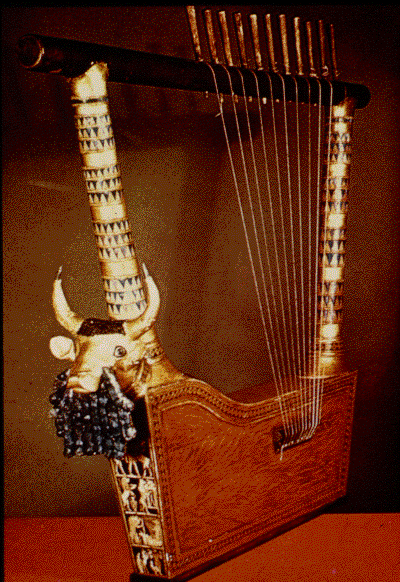Intellectual & Artistic Aspects

Art & Architecture
• Ziggurats were massive structures with the form of a terraced stepped pyramid.
• An expedition by British consul J. E. Taylor unearthed a Royal Cemetery filled with art, gold, silver, bronze, and precious stones.
• Four statues of standing bulls were found in the ancient temple to Nin-Kharsag.
• The most common material used for art was clay; it was used to make pottery, monumental buildings, and writing tablets.
• Around 3000 B.C.E. metal workers learned how to make bronze by mixing copper and tin. They would melt it by heating it at high temperatures and pouring it into molds to make sculptures.
• Carpenters built palaces for kings with materials such as cedar wood from Lebanon. They also constructed chariots and warships
• Stone masons carved sculptures from blocks of stone, which included anything from a large statue to small detailed reliefs.
• Artisans learned how to make glass about 3500 B.C.E.
• They used mud bricks to build houses, temples, palaces, tombs, forts, hydraulic works, and gardens.

Interesting Facts
Sculptures of men usually had long beards and wide open eyes. Also, artisans made everything from everyday objects to art that would glorify gods or kings.

Jewelry
Both men and women wore jewelry. Jewelry makers used precious gems, silver, and gold to make intricate designs.
They made all sorts of jewelry, such as bracelets, earrings, and necklaces. Lots of Sumerian jewelry was recovered from the royal tombs of Ur.

Intellect & Beliefs
The dead were buried with all the things they would need in after life, including servants, friends, and their possessions, such as silver, gold, and art. The graves themselves also contained religious art. Religious art was made from little figures, of metal or carved in wood, covered in silver, gold, or shells that illustrated the worship gods or deities.

Inventions
The potter’s wheel was invented around 8000-1400 B.C.E. Cuneiform writing was the first form of writing. It used wedge shaped characters, most likely created by syllables. The sundial was then invented by 2000 B.C.E. Sumerians were also credited with the invention of the wheel.